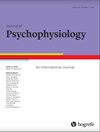Higher Resting Cardiovagal Activity Predicts Larger Decrease of Depressive Symptoms in Inpatients Treated for Stress-Related Depression
IF 0.9
4区 心理学
Q4 NEUROSCIENCES
引用次数: 0
Abstract
Abstract. Depression is one of the most prevalent mental disorders, with treatment outcomes generally being unsatisfactory. The identification of outcome predictors could contribute to improving diagnosis, treatment, and outcome. Heart rate variability (HRV), an index of cardiovagal activity, has been proposed as a potential correlate of depression as well as a predictor of treatment effectiveness. The aim of the present study was to examine if HRV at baseline could predict the outcome of inpatient treatment for stress-related depressive disorder (SRDD). Depressive symptoms of n = 57 inpatients with an SRDD, who were treated in a specialized burnout ward, were assessed using the Beck Depression Inventory (BDI) at the beginning, the end of treatment, and at 3-month follow-up. HRV (i.e., RMSSD, the root mean square of successive RR interval differences) was determined from a five-minute measurement in the supine position. RMSSD was not significantly associated with the BDI score at the beginning, end, and follow-up. Higher RMSSD was revealed to be a significant predictor of a stronger decrease in depressive severity from the beginning to the end of the treatment. Thereby, the regression model explained 7.6% of the total variance in the BDI decrease. The results revealed initial HRV to predict a larger decrease in depressive severity. Therefore, resting HRV represents a physiological resource and index of successful neurovisceral interaction, which supports inpatients in benefitting from specialized treatment.在接受压力相关抑郁症治疗的住院患者中,较高的静息心血管活动预示着抑郁症状的更大减少
摘要抑郁症是最普遍的精神障碍之一,治疗结果通常不令人满意。确定预后预测因子有助于改善诊断、治疗和预后。心率变异性(HRV)是一种心血管活动指数,已被认为是抑郁症的潜在相关因素,也是治疗效果的预测指标。本研究的目的是检查基线HRV是否可以预测压力相关抑郁症(SRDD)住院治疗的结果。在专门的倦怠病房治疗的n = 57例SRDD住院患者的抑郁症状在治疗开始、结束和3个月随访时使用贝克抑郁量表(BDI)进行评估。HRV(即RMSSD,连续RR区间差异的均方根)由仰卧位5分钟测量确定。RMSSD与开始、结束和随访时的BDI评分无显著相关性。较高的RMSSD被显示为从治疗开始到结束的抑郁严重程度下降的显著预测因子。因此,回归模型解释了BDI下降总方差的7.6%。结果显示,初始HRV可以预测抑郁严重程度的较大下降。因此,静息HRV代表了成功的神经内脏相互作用的生理资源和指标,支持住院患者从专科治疗中获益。
本文章由计算机程序翻译,如有差异,请以英文原文为准。
求助全文
约1分钟内获得全文
求助全文
来源期刊

Journal of Psychophysiology
医学-神经科学
CiteScore
2.60
自引率
7.70%
发文量
25
审稿时长
>12 weeks
期刊介绍:
The Journal of Psychophysiology is an international periodical that presents original research in all fields employing psychophysiological measures on human subjects. Contributions are published from psychology, physiology, clinical psychology, psychiatry, neurosciences, and pharmacology. Communications on new psychophysiological methods are presented as well. Space is also allocated for letters to the editor and book reviews. Occasional special issues are devoted to important current issues in psychophysiology.
 求助内容:
求助内容: 应助结果提醒方式:
应助结果提醒方式:


